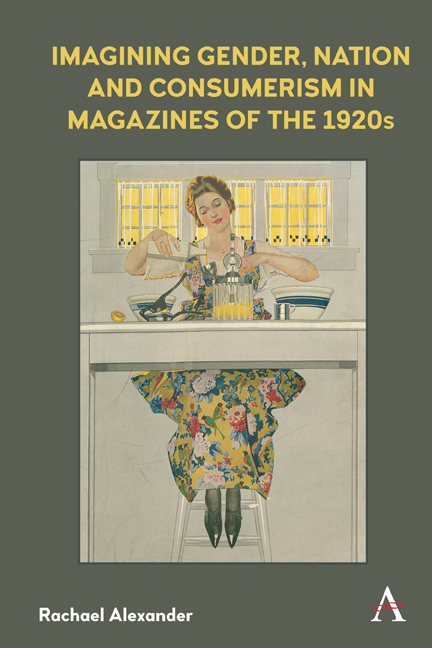Book contents
- Frontmatter
- Dedication
- Contents
- List of Illustrations
- Acknowledgements
- Introduction
- 1 Two Home Journals: A Comparative Approach
- 2 The Art of Femininity: Aspiration and Self-Improvement
- 3 The Home and Domesticity: Readers, Consumers, Citizens
- 4 Fashionable, Beautiful, Moral: Idealised Images of Femininity
- Conclusion
- Appendix: Content Analysis of Advertising from the Ladies’ Home Journal and Canadian Home Journal
- Notes
- References
- Index
Appendix: Content Analysis of Advertising from the Ladies’ Home Journal and Canadian Home Journal
Published online by Cambridge University Press: 14 December 2021
- Frontmatter
- Dedication
- Contents
- List of Illustrations
- Acknowledgements
- Introduction
- 1 Two Home Journals: A Comparative Approach
- 2 The Art of Femininity: Aspiration and Self-Improvement
- 3 The Home and Domesticity: Readers, Consumers, Citizens
- 4 Fashionable, Beautiful, Moral: Idealised Images of Femininity
- Conclusion
- Appendix: Content Analysis of Advertising from the Ladies’ Home Journal and Canadian Home Journal
- Notes
- References
- Index
Summary
This content analysis is based on the May and August issues of each title from 1920, 1922, 1926 and 1928. In order to gain the fullest understanding of the commercial content in relation to the magazine as a whole, both the number of advertisements and the page space occupied were recorded. In the case of the latter, the basic unit of measurement is the page. The page space is therefore represented as a proportion of the individual page, rather than a measurement of actual size, allowing for an accurate comparison of the larger Ladies’ Home Journal and smaller Canadian Home Journal which is unaffected by the alterations in page size that occurred in both titles. Each advert was counted and assigned one of 23 subcategories, which were then arranged under 3 main categories: ‘Home’, ‘Appearance’ and ‘Lifestyle’. Each advertisement was coded according to the category which fitted it best, involving in some cases a qualitative judgement. For example, some advertisements for toothpaste positioned themselves primarily as aiding appearance and were therefore assigned to the ‘Beauty products’ category. Other toothpaste advertisements, however, presented the product as a hygiene product – emphasising health benefits – and were therefore assigned to the Health and Hygiene category. One category was assigned to each product, according to the attribute which was primarily being marketed to the consumer. The only exception in this regard is in the category of ‘Beauty products’. Given that make-up was often marketed within advertisements for other beauty products, and that discussion of make-up forms a significant part of Chapter 4, an additional subcategory of ‘Of which makeup’ was added to the ‘Beauty products’ subcategory.
- Type
- Chapter
- Information
- Publisher: Anthem PressPrint publication year: 2021

